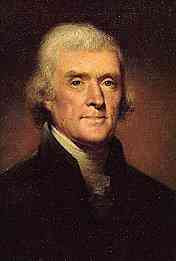To his Mother
OXON, January 13, 1735
DEAR MOTHER, -- Give my leave to say once more that our folks do, and will I supose to the end of the chapter, mistake the question.
Supposing him changed? Say they. Right: but that supposition has not proof yet – whether it may have: when it has, then we may come to our other point, whether all this be not providence, i.e. blessing. And whether we are empowered so to judge, condemn, and execute an imprudent Christian, as God forbid I should ever use a Turk or Deist.
I have had a great deal of a conversation lately on the subject of Christian liberty, and should be glad of your thoughts as to the several notions of it which good men entertain. I perceive different persons take it in at least six different senses: (1) For liberty from willful sin, in opposition to the bondage of natural corruption. (2) For liberty as to rites and points of discipline. So Mr. Whiston says, though the stations were constituted by the Apostles, yet the liberty of the Christian law dispenses with them on extraordinary occasions. [William Whiston (1667-1752) succeeded Newton as Lucasian Professor in 1703. The reference is to his book, The Primitive Eucharist Revived; or, an account of the doctrine and practice of the two first centuries. The ' stations' were the fasts: see letter of June 13, 1753, n.] (3) For liberty from denying ourselves in little things; for trifles, 'tis commonly thought, we may indulge in safety, because Christ hath made us free. This notion, I a little doubt, is not sound. (4) For liberty from fear, or a filial freedom in our intercourse with God. A Christian, says Dr. Knight, [James Knight, Vicar of St. Sepulchre's, London. See letter of May 8, 1739.] is free from fear on account of his past sins; for he believes in Christ, and hope frees him from fear of losing his present labor or of being a castaway hereafter. (5) Christian liberty is taken by some for a freedom from restraint as to sleep or food. So they would say, your drinking but one glass of wine, or my rising at a fixed hour, was contrary to Christian liberty. Lastly, it is taken for freedom from rules. If by this be meant making our rules yield to extraordinary occasions, well: if the having no prudential rules, this liberty is as yet too high for me; I cannot attain unto it.
We join in begging yours and my father's blessing, and wishing you an Happy Year. -- I am, dear mother,
Your dutiful and affectionate Son.
To Mrs. Wesley, At Epworth. To be left at the Post-house in Gainsborough. By London.







